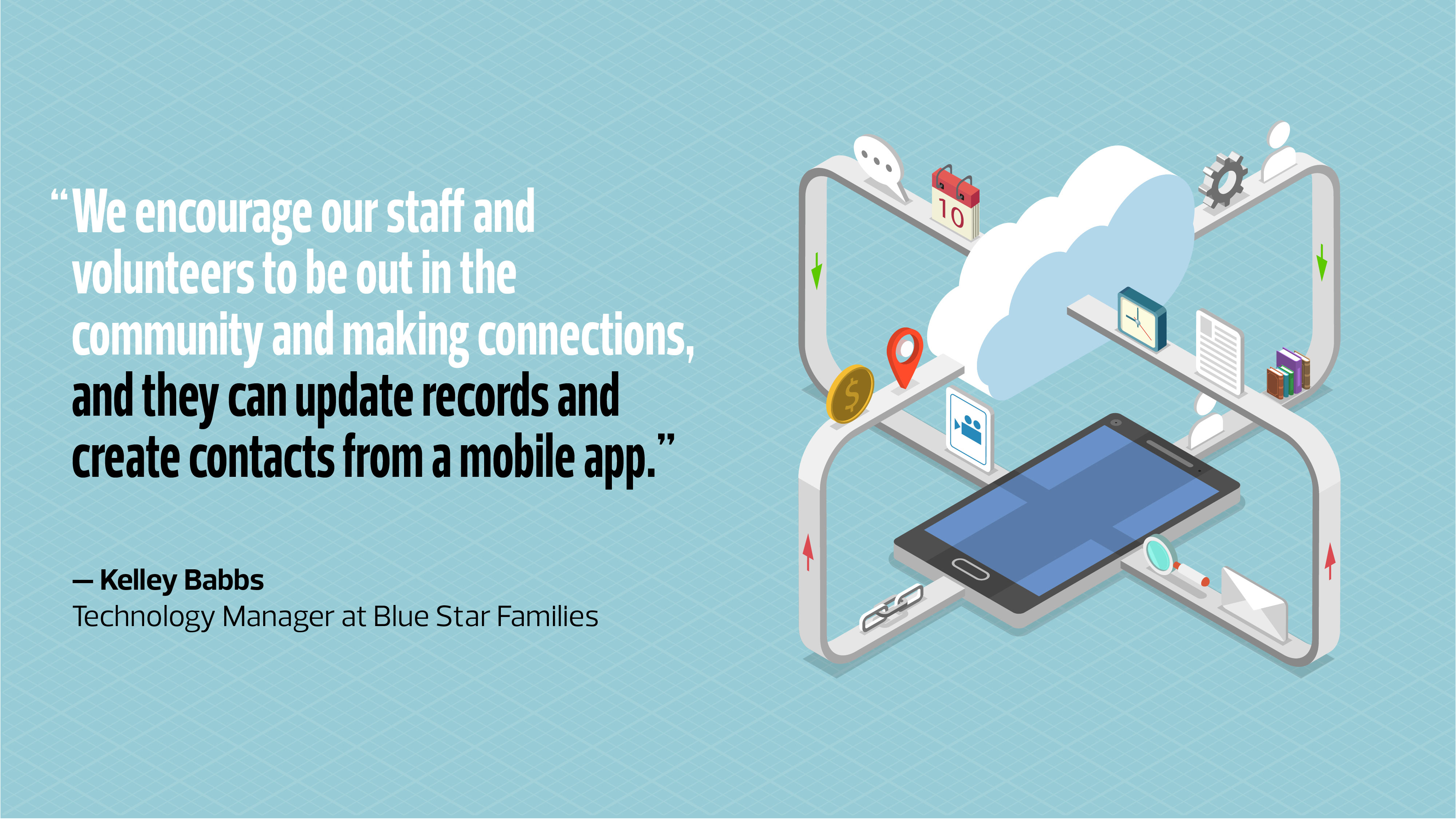Mobile Technology Gives Nonprofits a Fundraising Edge
Fundraising is a critical component of any nonprofit’s daily operations. But for too long, fundraising has been managed in a largely offline or desktop-computer-oriented approach. Some nonprofits, however, are transforming their fundraising efforts to integrate and maximize donor opportunities with mobile technology.
International Mission Board (IMB), the missionary mobilization agency of the Southern Baptist Convention, recently embraced mobility to help manage its events: it’s speeding up guest check-in and allowing the organization to collect and process donations on the spot.
At a recent fundraiser for the Syrian refugee crisis, IMB staff members used iPad devices and an event-management app to check in guests as they arrived. In the past, the nonprofit relied on paper lists for check-in, a method that proved inefficient and resulted in long delays.
“Now, we meet them as they enter,” says IMB Development Officer Chris Kennedy. “It’s more personal. We can get them checked in much faster and they don’t have to wait in line to get in.”
Kennedy and his team also use mobile card readers and a mobile payment app to accept credit card donations from event attendees. In the past, staffers had to jot down credit card information, then have the finance office process the donations the next business day.
“This makes it more convenient for donors and gives them greater confidence, having it processed immediately,” he says.
IMB isn’t the only nonprofit applying mobility in new and sophisticated ways: Some organizations have embraced mobile fundraising through text messaging, while others even create their own informational mobile apps.
As more organizations move to cloud-based applications to run their operations, they are able to use mobile devices to access and update their databases, check their financials and track fundraising campaign performance while in the field.
Providing Nonprofits Mobile Access on the Road
Blue Star Families, a virtual organization based in Encinitas, Calif., that provides free resources, services and opportunities to military families, uses cloud-based applications from Salesforce to manage its operations, says Kelley Babbs, technology manager for the nonprofit.
“An organization can really enable and empower their users to do as much as they want on mobile,” Babbs says. “We encourage our staff and volunteers to be out in the community and making connections, and they can update records and create contacts from a mobile app.”
On-the-go access to customer relationship management, marketing and collaboration applications also boosts staff productivity, she adds.
Similarly, when Kennedy and his team of gift officers at IMB hit the road to meet with donors, they rely on smartphones, tablets and notebooks to communicate internally via Slack, manage projects through Basecamp and collaborate on documents with Google Apps.
Based in Richmond, Va., with 300 staff members in the U.S. and about 4,000 missionaries overseas, IMB currently uses Blackbaud’s Raiser’s Edge nonprofit software to manage its donor information in house; Blackbaud’s Raiser’s Edge Event app for guest check-in; and Blackbaud’s MobilePay to take mobile donations.
Kennedy uses a mobile app to access the organization’s database whenever he needs to review notes on donors or look up addresses, phone numbers and donation history. After visits, he pulls out his iPhone to dictate and record notes about the meetings.

Mobile Supercharges Nonprofit Fundraising
Northwood University began accepting mobile donations in hopes of getting millennials to give back to their alma matter — and the change worked.
The private institution in Midland, Mich., gained nonprofit status in 1961, two years after it opened. The university previously solicited donations through direct mail, emails and phone calls. Although those traditional methods proved effective with older alumni, they fell flat among young graduates.
To reach smartphone-loving millennials, the university launched its first SMS fundraising campaigns three years ago, allowing graduates to donate by text message. Today, mobile donations account for 14.8 percent of all funds raised this year.
“Millennials respond to text messages, and it makes it very convenient for them to give; and for us, it’s an inexpensive way to reach out without using postage or having to print anything,” says Justin Marshall, the school’s vice president of advancement and alumni relations.
Marshall has learned that millennials are very issue-oriented, meaning they are willing to open up their checkbooks and donate when they can get behind a cause.
The university initially tested mobile fundraising and crowdfunding three years ago, launching a three-day pilot program to raise an emergency scholarship fund for a student whose family faced serious financial hardship. While the university had already made special accommodations, the student needed another $2,500 to pay for the semester.
Marshall used a text-to-donate app from MobileCause to set up a crowdfunding page that explained the situation. He then sent a text message to alumni, young and old. Within 72 hours, the university raised the $2,500 the student needed. The average age of donors was about 36.
“It was absolutely fantastic,” he recalls. “The extra support allowed the student to live the way we needed him to live to succeed and focus on his studies.”
One graduate even offered a $10,000 matching grant; alumni responded by raising an additional $13,000 within a week, giving the university $23,000 to create an emergency scholarship fund for future students.
Overall, the university expects mobile donations to increase in the coming years.
“Text messaging has been extremely helpful in increasing our donor base,” Marshall says. “It won’t provide the bulk of the funding right away, but it’s a growing segment. We know if we don’t start now and get people used to this, we will lose out on a whole generation of donors. It’s all about getting them to start a philanthropic relationship with us early on.”
Nonprofits Step Into Mobile App Development
Although Blue Star Families already has a mobile-friendly website, location-based marketing company Verve Mobile recently donated services to build an app that would reach a wider audience. The new mobile app gives military families and supporters another way to learn about Blue Star Families, sign up for services and donate funds.
During events, attendees can use the app to share photos with employees, who can then post the photos on social media. In the future, the nonprofit would like to create an online community that allows attendees to post and view all event photos, she says.
The organization, which has 35 active chapters throughout San Diego county, also plans to build location-based services into the mobile app, so people can receive notifications of coffee chats and other forthcoming events in their cities.
“The mobile app is still fairly new, and it’s a work in progress, but we want to personalize messages to our constituents,” Babbs says.









